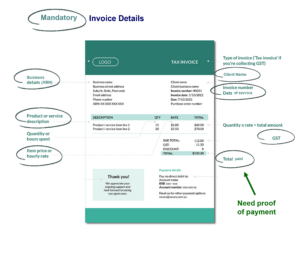Getting to Grips with NDIS Pricing Arrangements and Price Limits
There’s a common saying that “there’s no such thing as a free lunch”.
And when it comes to NDIS funding much needed supports for those who need them, that money has to come from somewhere.
Because it’s a Government initiative, the NDIS is funded by all Australians. That means no matter how you look at it, whether you’re a participant, a support worker or an NDIS planner, you’re paying for NDIS supports.
That’s why it’s important for anyone using or working with the NDIS to understand what providers can charge for their services, and use this information to ensure participants get the best possible value from their Plans.
Enter the NDIS Pricing Arrangements and Price Limits (previously called the NDIS Price Guide).
What are the NDIS Pricing Arrangements and Price Limits?
The NDIS Pricing Arrangements and Price Limits is a document containing all the types of services a participant may be able to fund with their NDIS Plan.
It details the upper limit that can be charged for any service, and includes information regarding regional differences, such as whether a provider can charge more in a remote location.
The National Disability Insurance Agency (NDIA) releases an annual update to this document on 1 July each year, but minor updates may be made at any time.
It’s particularly useful for self-managed participants to understand this guide in order for them to make educated decisions when engaging service providers.
Many plan managers also consider the NDIS Pricing Arrangements and Price Limits as one of the most important resources available to them when assisting plan-managed participants.
How to use the NDIS Pricing Arrangements and Price Limits
Participants, their support coordinators and plan managers can all use the NDIS Pricing Arrangements and Price Limits to determine what participants can expect from their NDIS Plans and to budget their spending accordingly.
Every NDIS Plan will contain funding within relevant Budgets designed to support the participant’s needs and goals.
By looking up the relevant Budget item codes or ‘Item Numbers’ in the NDIS Pricing Arrangements and Price Limits, participants, their support coordinators and plan managers are able to determine what types of service providers can be funded and the maximum amount they can be charged.
The document is divided into several sections: ‘support purpose’, ‘support categories’ and ‘support items’. Budgets are allocated to support purposes and categories, while support items are used to define the specific supports provided.
The correct application of support items against a participant’s Budgets will help providers to get paid faster, as it makes lodging claims with the NDIS much smoother.
Read on to better understand what support purpose, categories and items are and how they work.
Support Purpose
There are three overall ‘support purpose’ types which then break down into further categories.
Here’s a summary of each support purpose, along with links to further blogs detailing how each works.
Core
Supports that focus on helping participants in their daily life. This funding is designed to be flexible within the Core budget itself, but can’t be reallocated for other support purposes (that is, it can’t be reallocated to Capital or Capacity Building).
READ: Understanding the Core Supports Budget
Capital
Funding that delivers investments such as assistive technologies, relevant equipment, home and vehicle modifications. This funding tends to be highly specific in terms of what participants can spend their budget on.
READ: Understanding the Capital Supports Budget
Capacity building
Supports that aim to build a participant’s independence or skills where possible.
READ: What Is the Capacity Building Supports Budget and How Does It Work?
Support Categories
Each Budget contains a number of categories that are designed to align with specific outcomes to help participants achieve their goals.
These outcomes are listed under the NDIS Outcomes Framework and are called ‘outcome domains’ including things such as ‘Daily Living’, ‘Work’ and ‘Social and Community Participation’.
Confusingly, there are a total of 15 support categories that align to these 8 outcome domains – but this is because there are similar support categories appearing across the three support purpose-aligned Budgets (core, capital and capacity building).
Here’s a table displaying all the support categories and how they relate back to outcome domains and the overall support purpose:
| PURPOSE | OUTCOME DOMAIN | SUPPORT CATEGORY |
|---|---|---|
| Core | Daily Living | 01 Assistance with Daily Life |
| Daily Living | 02 Transport | |
| Daily Living | 03 Consumables | |
| Social and Community Participation | 04 Assistance with Social, Economic and Community Participation | |
| Work | 04 Assistance with Social, Economic and Community Participation | |
| Capital | Daily Living | 05 Assistive Technology |
| Home | 06 Home Modifications and Specialised Disability Accommodation (SDA) | |
| Capacity Building | Choice and Control | 07 Support Coordination |
| Home | 08 Improved Living Arrangements | |
| Social and Community Participation | 09 Increased Social and Community Participation | |
| Work | 10 Finding and Keeping a Job | |
| Relationships | 11 Improved Relationships | |
| Health and Wellbeing | 12 Improved Health and Wellbeing | |
| Lifelong Learning | 13 Improved Learning | |
| Choice and Control | 14 Improved Life Choices | |
| Daily Living | 15 Improved Daily Living Skills |
Support Items
When a provider wants to charge a service against a participant’s NDIS Plan, it needs to be claimed as a support item.
That means, for every allowable type of support or service, there will be a support item listed in NDIS Pricing Arrangements and Price Limits, including a unique reference number, or ‘item number’.

To help providers get paid quickly and without dispute from the NDIA, participants, support coordinators and plan managers should be clear about the types of support they can claim and to encourage providers to create clear invoices for their services, including individual line items for every support provided and, ideally, the correct item number for each.
Invoices that lack key details, especially when different types of support have been provided, can slow down the claiming process and may even impact the participant’s Plan in future, should the claim be processed incorrectly.
Can Participants Pay Above the Recommended Price Limit?
It is possible to pay above the price limit, but this will become a problem if the participant is expecting the full amount to be covered by their NDIS funds.
While the NDIA is clear that it doesn’t set the prices charged by providers, the purpose of the Pricing Arrangements and Price Limits document is to stipulate the maximum amount that will be funded for any service provided.
Basically, if a participant wishes to use a service provider that charges above the price limit guidance, they will be expected to pay the difference out of their own pocket.
Ultimately, participants should be using the Pricing Arrangements document for a guide on the upper limit on what they should be paying. In most cases and unless the provider has good reason for doing so, they should expect to pay below the recommended maximum.
NDIS-registered providers that have additional expenses due to incurring costs for maintaining specialist buildings or admin services are the kinds of providers most likely to need to charge at or near the maximum allowable price.
READ: 11 tips to Maximise NDIS Funding and Support Hours
Where to Go for Further Assistance
For participants struggling to understand the Pricing Arrangements and Price Limits document, it’s advisable they spend some time going over it, alongside their Plan, with key members of their ‘circle of supports’.
For plan-managed participants, their plan manager will be a key point of contact in this situation, as well as their support coordinator.
If it appears that a participant’s Plan may not include the right level of detail for what they need to meet their goals, then the main point of contact would be their NDIA planner or Local Area Coordinator (LAC).
